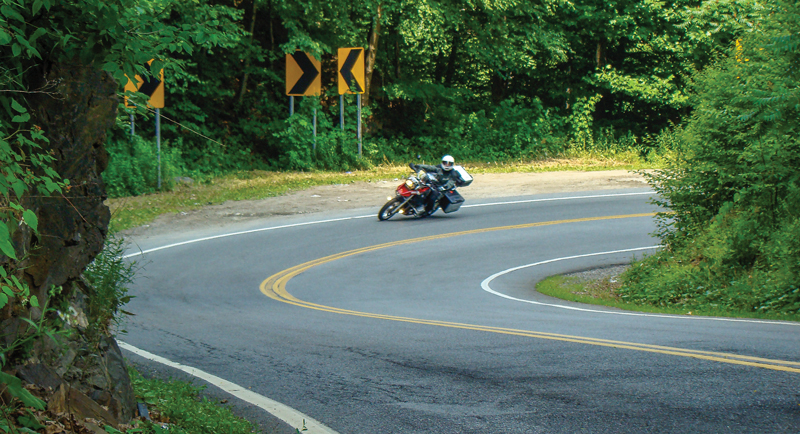I watch a lot of youtube and subscribe to quite a few motorcycle-related channels. Recently, a couple channels I like posted videos on trail braking and I thought I would share my thoughts.
When you take a new rider training course, they teach you a variation of the slow, look, press and roll for cornering. This means slow down as you approach the corner, look as far through the corner as you can, press on the handlebar to counter-steer and roll on the throttle through the corner.
In my local riding area, there are a lot of blind corners. This means when you are entering the corner, you have no idea what is around the corner. The consequence of this is that as you are accelerating (or applying maintenance throttle) through the corner, you may encounter something in the corner that requires you to stop quickly or if the corner starts to tighten even more you may start to run wide.
There’s other problems with the slow, look, press and roll method that I’ll let you watch the videos to hear about. The one problem I am concerned with is braking in the corner. The minute you apply front brake where most of your braking power comes from, your suspension will start to dive and the geometry of the bike changes, forcing the bike to change direction. You may have experienced this, I sure have. I got led into a corner that tightens as you get around it and the rider in front of me hit the brakes as they got nervous. I was surprised by this and grabbed the front brake. My bike immediately started drifting hard towards the guard rail on the outside of the corner. Now, I was smart enough to recover from my mistake but if I had been trail braking, this situation likely wouldn’t have even happened.
So what is trail braking?? Trail braking basically means applying a small amount of front brake as you enter the corner and maintaining that until you can see your exit. Once you can see your exit, you slowly release the brake and simultaneously accelerate. This has the advantage of ‘pre-loading’ the suspension. When the suspension is compressed, the bike’s weight is forward on the front tire, spreading it over the surface of the road, adding traction. If you do see an obstacle like a stopped car or gravel in your line, you can apply more brake without causing the suspension to dive and can quickly change your line or come to a stop as necessary.
As I was thinking about all this I came to the realization that the way I was riding in corners was all wrong. I was cornering like I was on the track. On the track, there is no gravel, there are no other cars and it’s unlikely you’ll come across a deer standing in the middle of the track staring at you. All of these things and more can occur on our local roads. By applying the trail braking methodology, I can be prepared for those and other unexpected situations that may crop up on a public road. I highly encourage you to watch the video links below and start practicing this on your daily rides. Ride safe!

